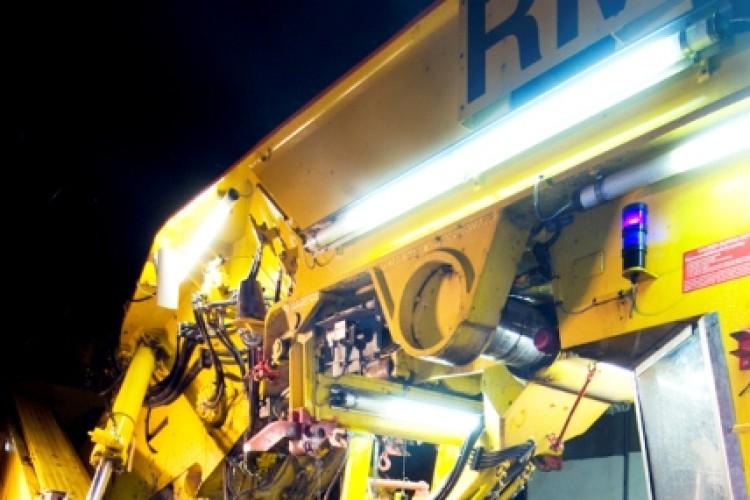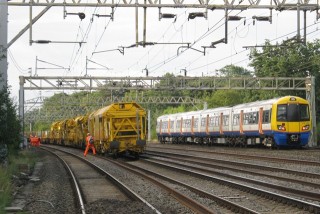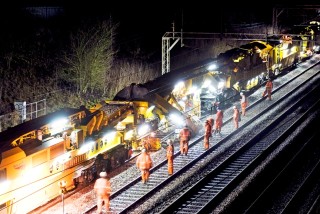A new system to replace sets of points saw a crossing at Wool in Droset replaced over midweek nights rather than blocking a line over an entire weekend, which is a first for UK railways.
The fast track relaying system, known as system 4, consists of two trains: one to dig up the old track and relay it, the other to replace and clean the ballast. Both were designed to Network Rail’s specification to work in the restrictive loading gauge of the West Coast main line that enables work to go on while keeping adjacent lines open.
In one August possession, the system replaced 1,800 yards of rail and sleepers – more than a mile – in 16 hours. The same system working on the Carlisle to Newcastle line on September 7 relaid 968 yards in just over seven hours. All five of Network Rail’s high output trains (consisting of three ballast cleaners and two track renewal systems) are operated and maintained by contractor AmeyCOLAS.
More conventional renewal methods also set new records over the period with Balfour Beatty replacing 1000 yards in 27 hours on the Wessex route and 3000 yards in 50 hours.
The system of modular switches and crossings sees points built off-site and delivered on a fleet of special wagons, which tilt on their side to allow them to be transported within the loading gauge.
High output track renewal trains and tilting wagons mean that Network Rail’s equipment can be used three times more intensively, as it works as hard during the week as on weekends.

Steve Featherstone, Network Rail’s programme director of track infrastructure projects, said: “We have committed to keeping the railway open for business as much as possible, and with the intensive way it is used we have had to innovate to keep the track maintained.
“Our new method of replacing points is one way we can tackle jobs overnight midweek possessions that would once have caused the railway to be closed for a weekend.
“We have recently set new records for using these new innovative methods as we renewed a set of points at Wool overnight in 8.5 hours and our track renewal system recently relaid 968 yards in one evening.
“By tackling renewals in this way we can keep the railway open longer for passengers and freight, as well as making efficiencies through better use of our people and machinery.”
The high-output track re-laying system (TRS) is used to replace sleepers and rail. The train, built by Matisa, arrives on site loaded with new sleepers and takes away the old sleepers once they are removed from the track. The new rail is delivered beforehand and the old rail collected on completion. The TRS is capable of laying up to 650m of track in an eight hour line closure during the week and up to 1700m in a 16 hour weekend closure.
The TRS carries out the following activities in a continuous process:
- unclips the old sleeper fastenings and removes them from the track, with a magnetic drum, for disposal
- removes the old rail from the sleeper housings
- removes the old sleepers from the track and transports them to the sleeper carrying wagons using gantry cranes and pallet style containers
- levels off the ballast bed and displaces the material to the side of the track
- places the new sleepers on the prepared ballast bed and spaces them correctly
- positions the new rail onto the new sleepers
- fastens the new rail to the new sleepers
- collects the new ballast and distributes it back to the newly installed track, ready for final geometry correction with a tamping machine.
Got a story? Email news@theconstructionindex.co.uk





